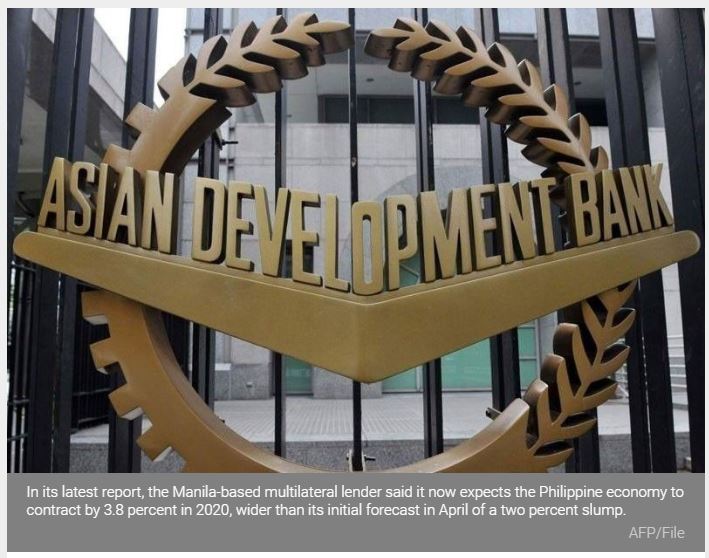Philippines: ‘Contraction to worsen’
ADB sees Phl economy shrinking by 3.8%
MANILA, Philippines — The Asian Development Bank (ADB) has further downgraded its economic forecast for the Philippines this year, citing a slowdown in consumption and investments in the first quarter amid the coronavirus pandemic.
In its latest report, the Manila-based multilateral lender said it now expects the Philippine economy to contract by 3.8 percent in 2020, wider than its initial forecast in April of a two percent slump.
“The forecast for 2020 is revised down to 3.8 percent contraction because household consumption and investment have slowed more than expected. The contraction in the global economy will continue to drag external trade, tourism and remittances,” ADB said.
In the first three months of the year, the economy shrank by 0.2 percent – its first since the Asian financial crisis-induced contraction in 1998 – due to the combined impact of the eruption of Taal Volcano in January that affected a major industrial region in the country, the steep decline in tourism as travel restrictions were put in place, and the enforcement of the Luzon-wide enhanced community quarantine in mid-March which crippled business activity and dampened demand.
Growth in household consumption, which comprised three-fourths of economic output, was flat, while investment slumped by 18.3 percent mainly due to lower outlay for machinery and equipment.
ADB’s updated forecast is worse than the government’s outlook of a two to 3.4 percent contraction this year.
For next year, however, ADB said it is maintaining its April forecast of a strong recovery for the Philippine economy of 6.5 percent, supported by public infrastructure spending and anticipated recovery in consumer and business confidence.
Starting June 1, Metro Manila and several areas transitioned to general community quarantine, the less strict version of the ECQ which was implemented for two months.
This enables more businesses to reopen and raise operating capacity and more people to return to work, subject to minimum public health standards and social distancing guidelines.
The bank also retained its inflation forecast for the Philippines to an average of 2.2 percent this year, picking up to 2.4 percent next year as the economy recovers.
This as lower oil prices offset the higher prices for food. Consumer demand also remains weak alongside weakened labor market conditions, limiting price pressures for goods and services.
Unemployment rate in the country reached a record high of 17.7 percent in April, translating to 7.3 million Filipinos who lost their jobs because of business closures and restrictions in mobility.
Source: https://www.philstar.com/business/2020/06/19/2021830/contraction-worsen


 English
English




